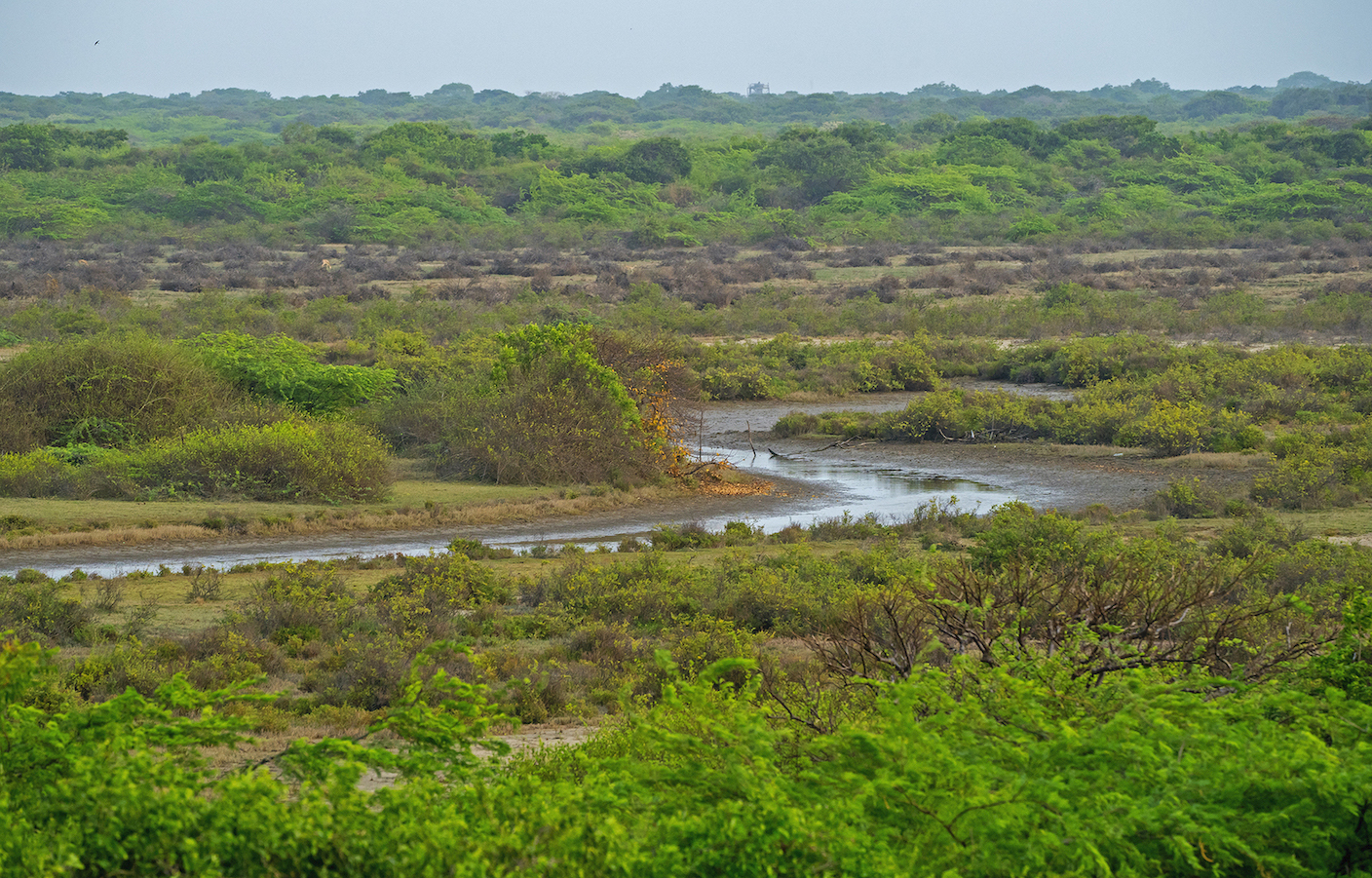At Point Calimere Wildlife and Bird Sanctuary in Tamil Nadu, the piercing hot sun caked and cracked the muddy expanse. I was extremely hopeful of seeing the herbivorous blackbuck (Antilope cervicapra cervicapra) antelopes up close in their natural habitat. Their protected area lies near Vedaranyam at the southeastern tip of Nagapattinam district, which juts out into Bay of Bengal.
Point Calimere Wildlife and Bird Sanctuary was created in 1967, primarily for the conservation of the blackbuck antelope, which is endemic to the area. Its landscape is diverse and includes swampy backwaters, salt pans, low dunes, tidal mud flats, tropical dry evergreen forests, and seasonal ponds. The sanctuary is also the place to see numerous and varied animal species like wild boars and monitor lizards, migratory birds like waders and flamingos, while bottlenose dolphins and star tortoise live off its shores on the north end of Palk Strait.
Native to the Indian subcontinent, blackbuck occur in Pakistan (small introduced population in Lal Suhanra National Park), Nepal, and the northwestern and southern regions of India, but are now extinct in Bangladesh. They are moderately sized antelope, and the average male height is 84 cm. Blackbuck have been classified into two subspecies A.c Cervicapra (Linnaeus, 1758) or the southeastern blackbuck (the ones in Point Calimere), and A.c Rajputanae (Zukowsky, 1927) or northwestern blackbuck. The Cervicapra subspecies is found in central, southern, and eastern India and is distinguished by the colour of its coat from its Rajasthani brethren, which have a grey sheen. Compared to the northwestern antelope, the southern subspecies has a narrower ring above the eye. Black dominates the neck region in southern blackbuck and a black stripe runs all along the length of its legs; white is restricted to the underbelly.
Our jeep grumbled and whined its way forward on the hardened, undulated mud track, and I fretted a little, unhappy about the noise we were making. I had braved one windy, nippy night at Poonarai Illam (Flamingo House), the forest department rest house, and was hoping that my one tour of the sanctuary in a rattling jeep would not chase the animals into hiding.
With morning giving way to harsher daylight and having spotted only a family of wild boars and few feral ponies, disappointment had set in. However, Raja, our tour guide and naturalist, was calm. “Blackbuck are most active during the day, madam. Don’t worry we will spot them a little more inside the sanctuary” he reassured me in heavy Tamil-accented English.
Soon a pair of long corkscrew-like ebony ringed horns peeped out from behind a thick shrub. A little further, on an open patch of green, another four graceful blackbuck, with glossy hides and white goatees, stood grazing in plain sight. One raised its head, but did not bolt away on seeing us. Instead it held my gaze. Then, it calmly went back to nibbling. These antelopes seemed, to me, to be less fidgety than the ones I’d encountered in Rajasthan.
When I visited Point Calimere in December 2017 some parts of the sanctuary were inaccessible because it had rained, turning the land marshy. But that also meant an unhurried, unhindered view of the horned beauties that had wandered into the sunny, grassy openness. Blackbuck generally prefer grass, warm weather, and proximity to a water source. Besides grass, the antelopes forage for the pods and leaves of thorny trees like Prosopis juliflora (called seemai kaaruvel in Tamil), an invasive tree species introduced by the British as an alternate source of firewood.

The swampy, marshy areas of Point Calimere sanctuary see a huge number of migratory waterbirds like spot-billed pelicans, black-headed ibises, flamingos, waders, and darters during the winters.
Point Calimere sanctuary’s blackbuck population has risen. “Hunting blackbuck is sacrilege…iralai maan [blackbuck] is the vahana [vehicle] of Goddess Korravai, the goddess of fertility, war, and victory in Tamil traditions” Raja tells me. Additionally, a strange myth protects this animal from becoming human food. There is a belief in Tamil villagers, that consuming blackbuck meat can cause leprosy, and this scares them away from hunting the antelope. In the neighbouring state of Andhra Pradesh, blackbuck is the state animal. All this, along with conservation measures such as restrictions on cattle grazing by the forest department, seems to have doubled the number of the blackbuck in this region in the last few decades. Not just in local myths, these slender majestic creatures are revered in many ancient Indian texts, community practices, miniature paintings of the Mughal era, and by law in the modern era. Let’s hope that’s enough to keep them protected and out of the world’s growing list of endangered animals.